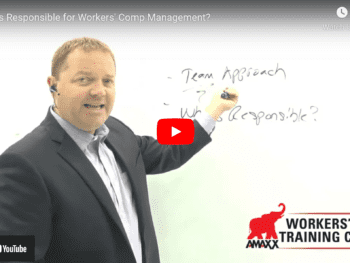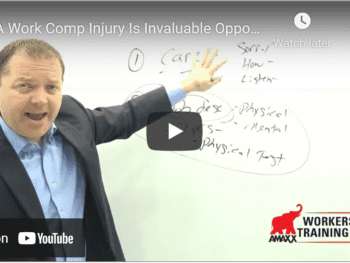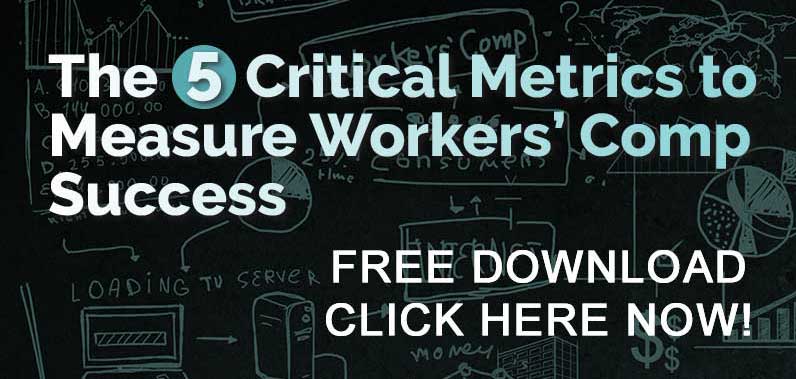
However, being an active, responsible participant in your work comp claims process improves the employer’s financial picture. Here are the minimum expectations of employer involvement in workers’ compensation:
A Safe Work Environment:
It is your responsibility as an employer to provide a safe work environment. By doing so, you eliminate many work comp claims because the injuries never happen. A strong safety program in which the employees are actively involved in preventing accidents has a major impact on the financial cost of workers’ compensation
Click Link to Access Free PDF Download
Know the Law:
Post in a convenient place state required notices for all employees to see. Notices include their rights under the work comp laws, a list of approved medical facilities (in states allowing the employer to select the medical provider), post OSHA posters and anything else required in your state.
If an employee is injured, allow the employee to seek medical care as quickly as possible. Do not do anything appearing to interfere with the employee’s right to medical assistance.
Report the Claim At Once & Accurately:
It is not enough to report the injury claim to the claims office. Report the injury immediately to the claims office – just as soon as the employer becomes aware the injury occurred. Not next week, not in a couple of days, not when you “get around to it,” but NOW – when the employee is seeking medical treatment for the work comp injury.
All employees and all their supervisors should know that it is a requirement for every work comp claim to be reported to your work comp claims coordinator as soon as medical treatment is needed. The claims coordinator then promptly completes the Employer’s First Report of Injury and immediately sends it to the claims office. Immediately means, “stop whatever you are doing” and report the new injury/claim.
All supervisors should be trained on the information needed to complete the Employer’s First Report of Injury form so it is accurate when it is received in the claims office. It is well established in the claims field that fast and accurate reporting of the claim has a positive impact on the outcome of the claim.
Cooperation with the Insurance Company:
The employer who takes the hands-off approach to work comp claims will see a steady increase in their work comp insurance premiums. The smart employer takes the approach of being actively involved in the work comp claims.
It is your responsibility as an employer to assist the work comp adjuster in their handling of the claim. As the adjuster investigates the claim, there will be a need for documentation from you as to the employee’s payroll history. The adjuster may need to speak with the employee’s supervisor or co-workers who witnessed the injury. In some situations, the adjuster may need to see the employee’s personnel file or health benefits file. If you are contacted by an attorney for the employee, be sure to notify the adjuster immediately. By providing whatever assistance the adjuster needs on a timely basis you can help to mitigate the cost of the work comp claim.
Employee Contact:
One of the most often over-looked responsibilities of the employer in work comp claims is the human element. The employee’s supervisor or the work comp claims coordinator or both, should stay in contact with the injured employee while that person is off work. By letting the employee know your company is concerned about his/her well-being and by keeping the lines of communication open, the risk of the claim becoming adversarial or the employee employing an attorney, guaranteed to delay resolution of the claim, is diminished.
FREE DOWNLOAD: “5 Critical Metrics To Measure Workers’ Comp Success”
Return to Work Program:
Study after study show the quicker the employee is returned to work, the lower the overall cost of the workers’ compensation claim. It is imperative the employer have a Modified Duty Program or a Light Duty Program available for all injured employees.
In most states, you can contact the employee’s medical provider and ask for the conditions under which the employee can return to work. You have the right to know the employee’s medical condition and to have the worker return to work on a light-duty program with the medical provider’s agreement.
By bringing the employee back to work on a modified duty program, the employee benefits and the employer saves money (remember the more the insurance company pays out, the higher your eventual work comp premium). When the employee is off work, the insurance company is paying benefits to the employee, but the employer is not receiving anything of value. By returning the employee to work, the benefits being paid by the insurance company stop. While an employee on modified duty may not be as productive as an employee on regular duty, the employee still produces some benefit to the employer.
Summary:
The more proactive the employer is in the work comp claim process, the lower the overall cost of workers’ compensation. Employers who provides a safe work environment, knows the requirements of the workers’ comp laws in their state and who reports their work comp claims quickly and accurately will lower their cost for work comp coverage. The employer who cooperates with the insurance adjuster’s investigation, keeps in contact with the employee and assists the employee to return to work quickly experiences a positive effect on the cost of workers’ compensation.

Contact: mstack@reduceyourworkerscomp.com.
Workers’ Comp Roundup Blog: http://blog.reduceyourworkerscomp.com/
©2024 Amaxx LLC. All rights reserved under International Copyright Law.
Do not use this information without independent verification. All state laws vary. You should consult with your insurance broker, attorney, or qualified professional.
FREE DOWNLOAD: “5 Critical Metrics To Measure Workers’ Comp Success”















